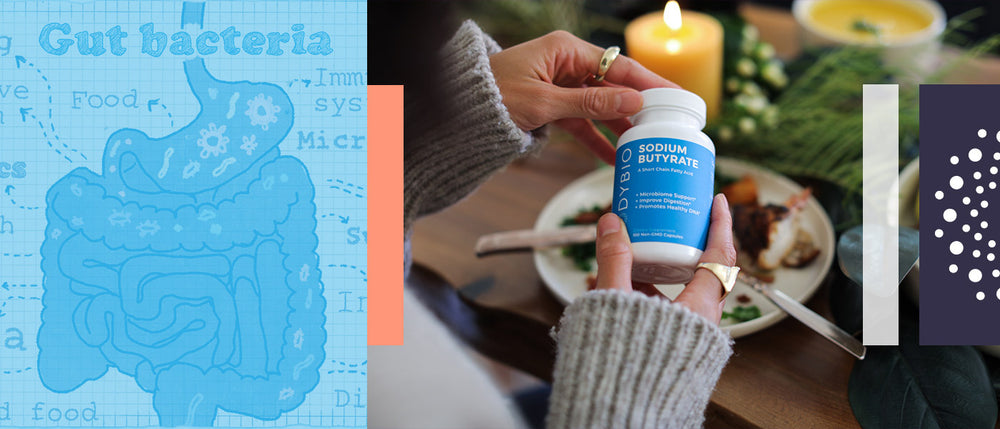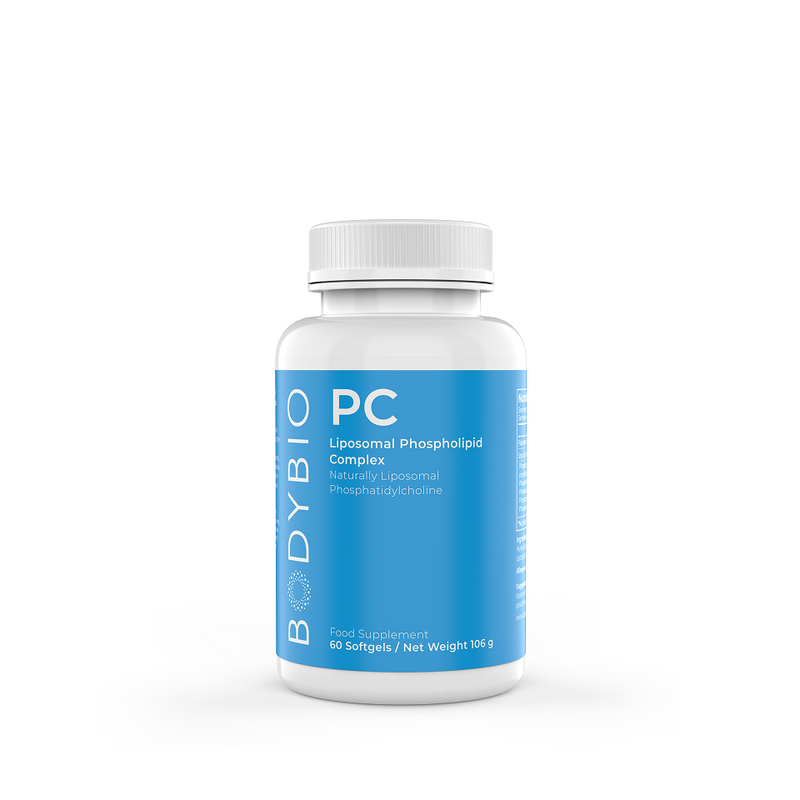How Emotional Trauma Affects Your Cells and What You Can Do to Heal
Key Takeaways:
Emotional and psychological trauma can have profound effects on our physical health — even down to the cellular level.
Cellular memory refers to cells’ ability to “remember” past traumatic events and initiate a response to ensure the organism’s survival but not necessarily ensure the best health.
There are many practices to release trauma from the body and rewire healthier patterns and beliefs down to the cell — some can be practiced alone, and some require a practitioner.
In the last thirty years or so, science has made fascinating progress surrounding the impact of psychological and emotional trauma on physical health. We now understand that emotional trauma — whether it's soldiers with PTSD from their experiences with war and violence, survivors of abuse or neglect, or those who have lived through traumatic events like car accidents and extreme weather events — has lasting effects down to the cellular level.
Even "smaller" or "little t" traumas accumulated throughout one's life can have negative health impacts down the line if left unaddressed. So how does trauma impact health on the cellular level, and what can we do to address trauma and restore good health? Let's investigate.
Table of Contents:
- How Do We Define Trauma?
- How Trauma Changes Health on a Cellular Level
- How to Heal Trauma and Restore Your Cells
- Take Your Healing to the Next Level
How Do We Define Trauma?
First of all, what is trauma exactly? There are many ways to define this complex term.
Physical Trauma
Physical trauma consists of physical injury sustained to the body, usually acute in nature. While physical trauma can have lasting effects on overall health, from a biological perspective, the physical body is typically able to heal and repair itself more easily given the right resources (plenty of macro and micronutrients).
Emotional and Psychological Trauma
Emotional and psychological trauma causes an emotional response or learned behavior that is not as easily changed. This is because the brain and body hold onto traumatic experiences they perceive as a threat to ensure the organism's continued survival. You have a higher chance of surviving the same experience if your body remembers how it survived the first time, even if it's painful to hold onto.
Examples of emotional and psychological trauma include grief/loss of a loved one, a near-death experience, or witnessing a life-threatening situation.
Adverse Childhood Experiences
Adverse childhood experiences, or ACEs, are traumas accumulated in childhood that have behavioral and even physical health impacts as a person progresses into adulthood. These can range from more extreme experiences of physical and mental abuse to certain "secondary" experiences, such as having a parent with substance abuse disorder, even if their condition didn't impact you physically.
In cases of psychological trauma and ACEs, there may have been a physical trauma component involved, but the ongoing health impacts are more likely due to stored emotional trauma in the body.
How Trauma Changes Health on a Cellular Level
This is where things get a little sci-fi. As it turns out, every one of our cells, not just neurons, has a kind of cellular memory that remembers and holds onto trauma from years prior, even from infancy when we have no conscious memory of what happened to us.
Recent research hypothesizes that cellular memory is what accounts for our physical and emotional responses to certain events and stimuli, regardless of whether we are in actual physical danger or perfectly safe. For example, a soldier with PTSD might hear a loud noise and instinctively look for cover, even if they are in a safe, known location. This is cellular memory at work. The body remembers needing to look for a safe space well before the brain can even process how to react.
This is also how we can explain physical symptoms, such as chronic pain, that are connected to unprocessed trauma from weeks, months, or years prior. Here are some more specific ways trauma can show up in the body on a systematic and cellular level.
Changes in Cortisol Levels and Sensitivity
Unprocessed trauma can lower your baseline cortisol levels, reducing your ability to handle stress. It can also cause cortisol levels to fluctuate more easily and make you more sensitive to stressors. In turn, low cortisol levels and higher sensitivity to stress may have downstream effects such as a higher predisposition to anxiety and depression, hormone imbalances, and chronic fatigue.
Changes in Immune Function
Stored trauma can suppress immune function, which may contribute to acute and chronic illness. Many autoimmune diseases are now thought to have a trauma component to their onset and severity. In turn, a suppressed immune system may lead to a greater risk of acute illness like colds and increased susceptibility to GI issues like bloating, loose stools, and gut dysbiosis.
Changes in Gene Expression
One of the biggest ways trauma impacts your cells is by affecting gene expression. Stored trauma in the body can actually turn certain genes on or off, potentially affecting emotional regulation, stress response, and even altering the way DNA is replicated to create brand new cells.
Altered gene expression is also how trauma is passed from generation to generation. For example, studies have shown that Holocaust survivors passed down altered gene expression through several generations, influencing outcomes like mental health conditions and susceptibility to stress.
Changes in Mitochondria Function
Mitochondria (the energy factories of the cell) are essential components of our cellular health, powering 95% of the body's energy requirements. Trauma can cause mitochondrial dysfunction as well as mitochondrial death. This leads to many downstream effects, including chronic fatigue, low mood, and decreased cellular regeneration.
Changes in Biological Aging
Lastly, trauma seems to cause an overall increase in biological aging. In children and young adults, this could look like early onset of puberty and slowed or altered brain development. In adults, this may lead to faster physical decline and higher rates of cardiometabolic, neurodegenerative, and other chronic diseases.
How to Heal Trauma and Restore Your Cells
The good news is that trauma can be addressed and worked on before it causes significant negative effects on your health. Even if you are already experiencing a chronic illness or mental health condition with a trauma-related component, you may reduce your symptoms by working to resolve the underlying trauma. Here are a few trauma healing tools to look into.
Believe in Your Ability to Rewire Your Brain
Neuroplasticity is the brain's ability to physically change and rewire specific behaviors and beliefs (ideally the ones that aren't in your best interest). We can use the power of neuroplasticity to process stored trauma on a cellular level so that the body can release it and rewire a new behavior, thought, or emotion that supports your health and well-being.
Even shifting your perspective to embrace the idea that your brain is capable of change can begin to have positive effects on your physical and mental health!
Use Nutrition to Support Brain and Cellular Change
When you're doing the work of healing trauma that you've been carrying for months or years, your body needs more nutrition to support that change. This is where making sure you're eating a healthy, anti-inflammatory diet can have a huge impact, along with plenty of healthy fats to support your brain and cells.
Balance Oil and BodyBio PC are the ultimate nutritional tools to make sure your brain and cells have the resources they need to rewire new beliefs and process stored trauma.*
Process and Release Stuck Emotions
There are many ways to release stuck emotions from the body, including:
- Journaling methods, such as JournalSpeak
- EMDR therapy
- Somatic experiencing therapy
- Cellular Release Therapy (CRT)
- Hypnosis meditation
-
Brain retraining programs
These are just a few of the available options. Some you can practice on your own, and some require a trained practitioner. If you are processing severe trauma from your past, it is recommended to work with a practitioner who can help you through the process.
Relearn and Embody Safety
Along with releasing and processing stuck trauma in the body, we have to teach the body and mind how to act instead. For example, if trauma caused you to live with generalized anxiety, you would want to relearn how to live your daily life from a place of calmness. Sometimes relearning these new behaviors comes naturally alongside trauma reprogramming, but often it's an ongoing process to live and learn these new ways of thinking and acting.
Practices that can help the body relearn safety include:
- Meditation and guided meditation
- Yoga and somatic movement
- Speaking calmly and reassuring your inner child
- Moving more slowly and deliberately (instead of rushing)
- Writing and speaking affirmations
- Journaling how you want to feel and exist in the world
It does take time, but all of these practices can begin to rewire your brain and change how you live every day.
Take Your Healing to the Next Level
For many people with "capital T" trauma and even the rest of us with the regular everyday trauma of growing up in the world, trauma healing can initiate a whole new level of health and wellbeing. Not to mention the outsized benefits from a cellular health and longevity perspective. Whether you're looking for a new angle to approach healing chronic disease or you simply want to put old traumatic history to bed, it's worth the work to heal these emotional and psychological wounds.
Want to support your brain and cells to rewire healthy neural pathways and restore health on a cellular level? Boost your nutrition with BodyBio PC.*
Bourassa, K.J., Sbarra, D.A. Trauma, adversity, and biological aging: behavioral mechanisms relevant to treatment and theory. Transl Psychiatry 14, 285 (2024). https://doi.org/10.1038/s41398-024-03004-9
Chaudry, I. H., & Bland, K. I. (2009). Cellular mechanisms of injury after major trauma. The British journal of surgery, 96(10), 1097–1098. https://doi.org/10.1002/bjs.6697
Colich, N. L., Rosen, M. L., Williams, E. S., & McLaughlin, K. A. (2020). Biological aging in childhood and adolescence following experiences of threat and deprivation: A systematic review and meta-analysis. Psychological bulletin, 146(9), 721–764. https://doi.org/10.1037/bul0000270
Girgenti, M. J., Hare, B. D., Ghosal, S., & Duman, R. S. (2017). Molecular and Cellular Effects of Traumatic Stress: Implications for PTSD. Current psychiatry reports, 19(11), 85. https://doi.org/10.1007/s11920-017-0841-3
Katrinli, S., Oliveira, N.C.S., Felger, J.C. et al. The role of the immune system in posttraumatic stress disorder. Transl Psychiatry 12, 313 (2022). https://doi.org/10.1038/s41398-022-02094-7
Youssef, N. A., Lockwood, L., Su, S., Hao, G., & Rutten, B. P. F. (2018). The Effects of Trauma, with or without PTSD, on the Transgenerational DNA Methylation Alterations in Human Offsprings. Brain sciences, 8(5), 83. https://doi.org/10.3390/brainsci8050083










